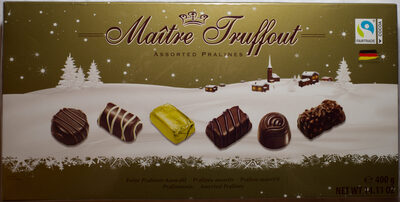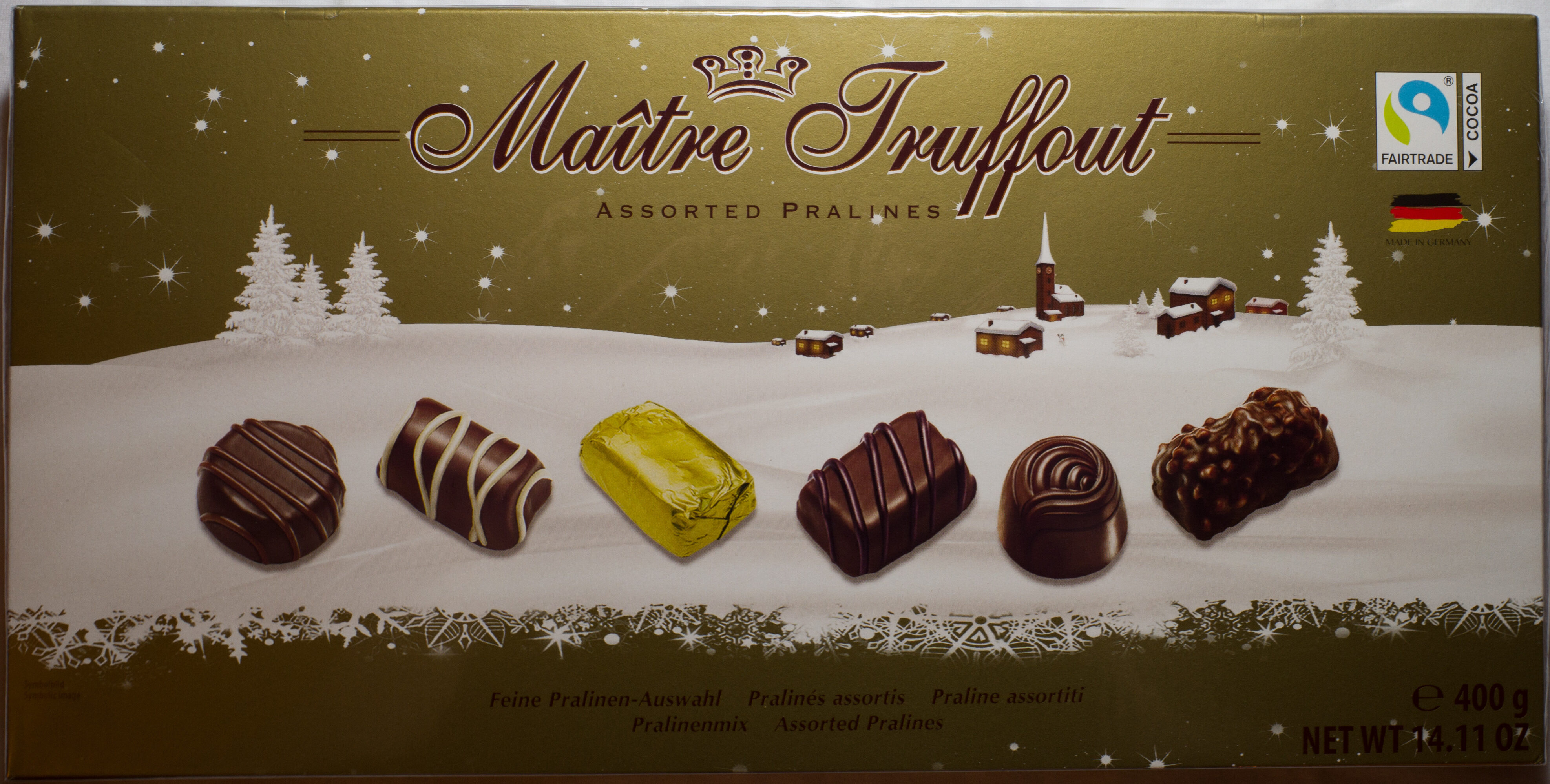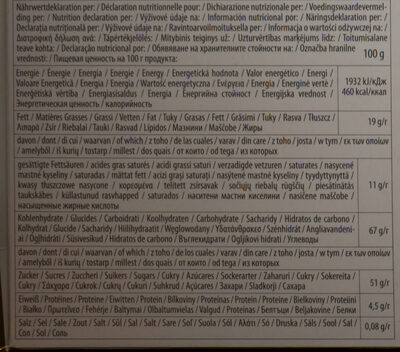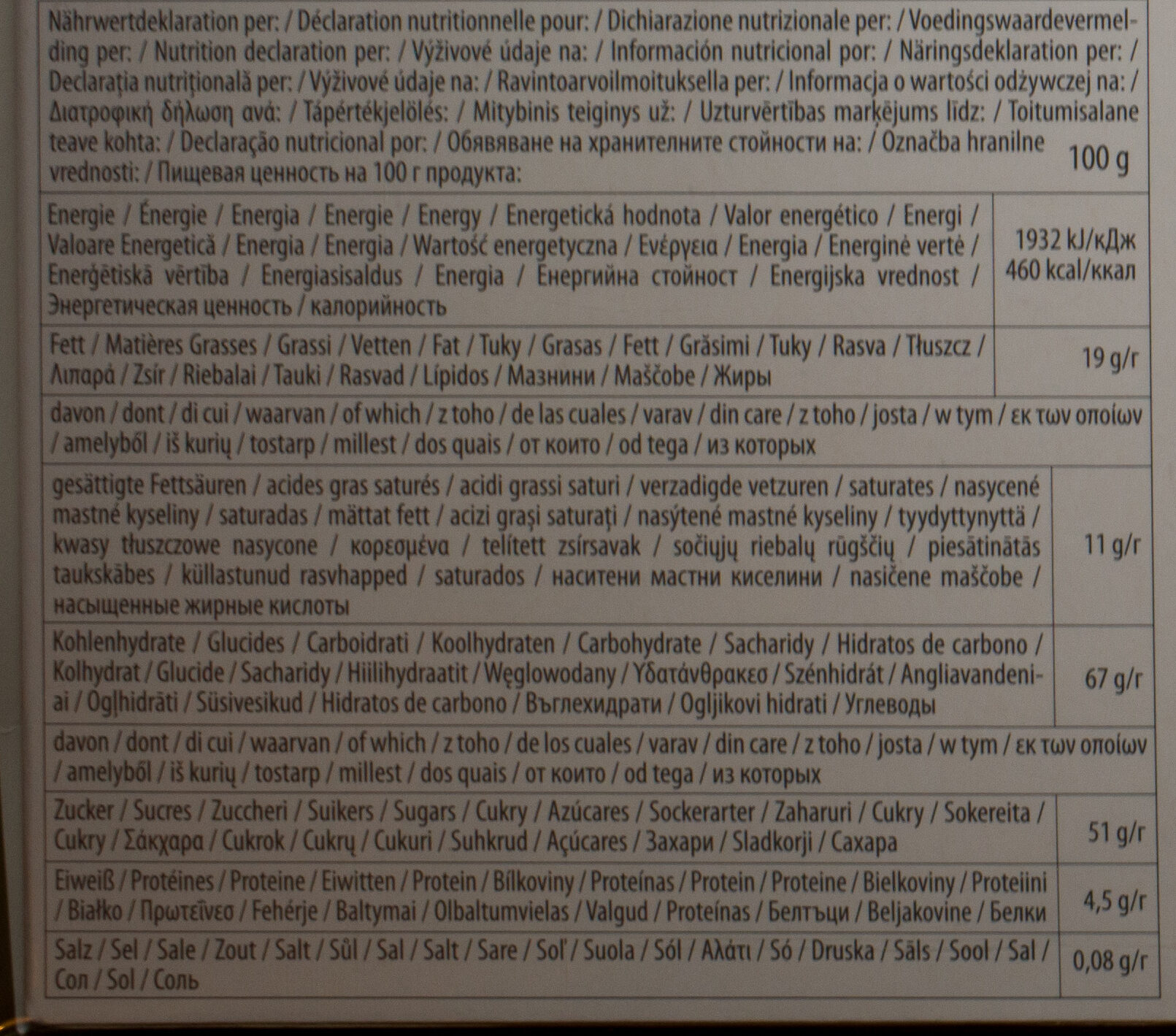Maitre Truffout - 400g
This product page is not complete. You can help to complete it by editing it and adding more data from the photos we have, or by taking more photos using the app for Android or iPhone/iPad. Thank you!
×
Barcode: 9002859099212 (EAN / EAN-13)
Quantity: 400g
Packaging: Cardboard, Paperboard
Brands: Maître Truffout
Categories: Snacks, Sweet snacks, Cocoa and its products, Confectioneries, Chocolate candies, Bonbons, Assorted chocolate candies
Labels, certifications, awards:
Fair trade, Fairtrade International, Made in Germany
Matching with your preferences
Environment
Packaging
Transportation
Threatened species
Labels
Report a problem
Data sources
Product added on by prepperapp
Last edit of product page on by packbot.
Product page also edited by jolesh, musarana, openfoodfacts-contributors, rochus.
If the data is incomplete or incorrect, you can complete or correct it by editing this page.












